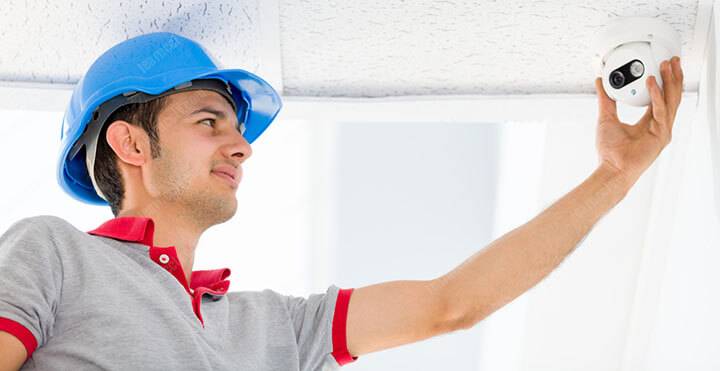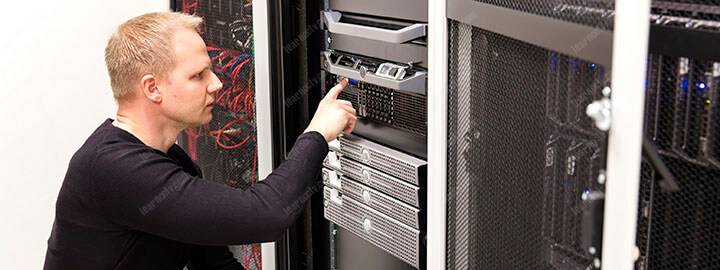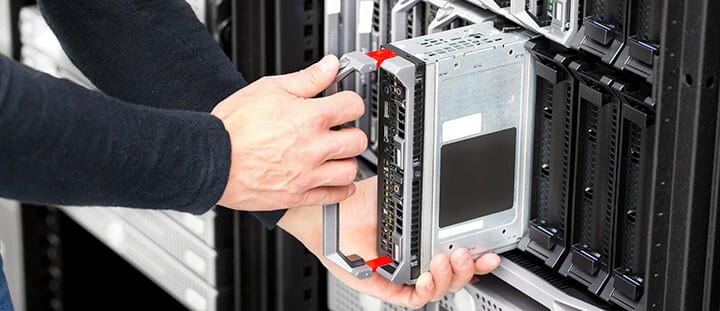Pricing a CCTV maintenance contract (annual contract)
After installing a surveillance system is highly recommended to talk to your client about maintenance. It's really important to keep everything working properly since a considerable amount of money is usually invest in a security system.

Pricing a CCTV maintenance contract often is not an easy task, but it needs to be done in order to offer the best service agreement to your client.
In this article, I will show you how to price a CCTV maintenance contract and give you some orientation about the job that needs to be done.
The need for qualified professionals
Sometimes it's hard to figure out what should be offered to your client, depending on the type of security system is installed. Nowadays there is a lot of modern IP technology on a surveillance system which makes it better but also more complex.

Security system maintenance requires CCTV qualified technicians to deal with network devices such as IP cameras, switches, routers, servers, recorders, etc.
Part of the technical team also needs to have some good skills in IP networking, VMS software, international standards, and troubleshooting.
What I'm trying to say is that maintenance labor for a modern security system can cost you more and you should be totally aware of that fact.
The CCTV maintenance recommendation
Here are some examples of what might be covered in the CCTV maintenance services. This list can be adjusted according to your needs.
CCTV camera maintenance

The first thing that comes to mind when talking about CCTV maintenance is how to keep the camera working properly, especially during the warranty period.
It's important to keep the cameras working and also clean. See the list below with the maintenance tasks.
- Installation: It's important to take a look at each camera to make sure the physical installation is OK. Sometimes some incidents such as hurricanes, earthquakes, wall cracks, or something hitting the camera can affect the camera positioning and integrity. The camera cabling and connectors should also be checked to make sure they are not compromised and damaged by weathering, corrosion, animal bites or improper pulling.
- Field of View: This is also very important, the FOV (Field of View) must be always checked to guarantee it's covering the area it supposes to. Just compare the actual FOV with the one from the initial project. If you don't have this information, just ask somebody in charge or use your skills to choose the best FOV for that situation.
- PTZ presets and patrolling: If there are PTZ cameras in the system, check if the presets, patrolling and patterns are according to the initial project. Just take a look at the installation report to make sure everything is correct.
- Cleaning: It's common practice to clean the dome and lenses at least twice a year. Depending on the installation area, it's necessary to clean more often, but all depends on the environment condition and the climate which can bring dust or even snow. Sometimes there are some bugs or birds that start living under the cameras or close enough to cause some problems. You might find the proper way to clean the camera and get rid of those insects/animals.
- Condensation: Some dome and bullet cameras can have condensation problems that sometimes are not visible during the inspection, especially if such condensation occurs during night time or after raining. Check the video recording or ask the CCTV operators to find out if there are some condensation issues that need to be fixed.
- IR operation: Infrared cameras can have problems with reflection or with the infrared cut filter. Check the recordings to make sure the footage from infrared cameras are good enough and if there's no IR reflection that hits the camera lens. Those reflections are usually caused by walls and reflective objects that are close to the cameras or even by scratches or dust on the dome or housing. Check also if the camera ICR (Infrared Cut Filter Removal ) is working properly.
- Firmware Updates: IP cameras have an operating system that runs different types of services that are frequently updated to correct software glitches and improve the security to avoid hacking. It's common practice to update the camera's firmware if there's a major security threat or some considerable quality or feature improvement, other than that it's not necessary to update all the cameras just because a new firmware with minor changes is available.
Network and server rack maintenance

It's part of the CCTV maintenance routine to check the racks that are installed in the facility to make sure they are in working condition. See the tasks below:
- Violation: The racks hold the servers, switches, recorders, routers and other devices that are essential for the security system. They must be locked and only authorized personnel must have access to them. Make sure the racks are correctly protected and there's no sign of violation. If you find something that is unusual such as a break-in, talk to the client to discuss the course of action (call the police or something similar).
- Cabling and connectors: Check the cables and connectors to make sure everything is OK. Look for signs of cable pulling, corrosion, rust, damages caused by animals or insects. Replace bad cables and connectors if necessary.
- Equipment: The servers, recorders and network devices such as switches and routers must be in working condition. Check if their fans are working and if they are not overheating, check also if there's some unusual noise that indicates an issue with spinning hardware such as hard drives and fans. You can also run a diagnostic test if the equipment you are using has such a feature.
- Cleaning: Usually the racks attract a significant amount of dust due to the equipment fans. Sometimes they also become the home for bugs or small animals. Just clean the rack properly as often you clean the cameras.
- Power: The equipment inside the racks are very important. for the surveillance system. Make sure the UPS (Uninterrupted Power Supply) is working by running (use a diagnostic tool if it's available).
Server and PC maintenance

The servers and PCs are a very important part of the surveillance system and you need to make sure they are properly maintained. See the recommended tasks:
- Hardware: Just make sure the hardware is OK. Check for the fans, cables, and connectors to make sure they are in working condition and replace the components if necessary.
- Software: Run a diagnostic tool to make sure the hardware, operating system and software are working as expected. Check if there are some unusual behavior with the VMS or any software that is running in the server or PC.
- Update: Update the VMS software, drivers and everything that is necessary to the latest stable version. Just be careful with this procedure and make sure you have tested the update in your laboratory before installing it in your customer computers.
- Cleaning: As usual, clean the equipment to remove all the dust and perhaps the insects that like to live in electronic devices.
- Power: Check the power and make sure the UPS system is OK.
How to price a CCTV maintenance contract
The most common way to price a CCTV maintenance contract is by charging an annual percentage of the total cost of the project installation which includes everything such equipment, cabling, software, and labor.
The annual contract price is something between 8 to 12% of this total cost for preventive maintenance to avoid failing. Most of the time this percentage is used to calculate the maintenance related to the installed equipment.
System integrators usually charge a little bit more (around 15%) to include software related tasks such as VMS updates and configuration.
If the total cost of installation is $100,000 the annual CCTV maintenance contract (preventive maintenance) would cost between $8,000 to $15,000.
The bottom line
These are the industry standard for CCTV maintenance contract.
As a system integrator, you need to calculate all the costs before signing a contract with your client. Make sure you can hire the correct technical team that can handle the job and that they are affordable for such a contract.
You can negotiate a long-term contract with your client and let him know that the best and more affordable to have a 3-year maintenance contract.






